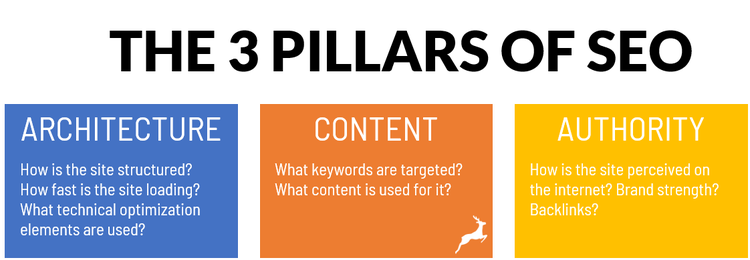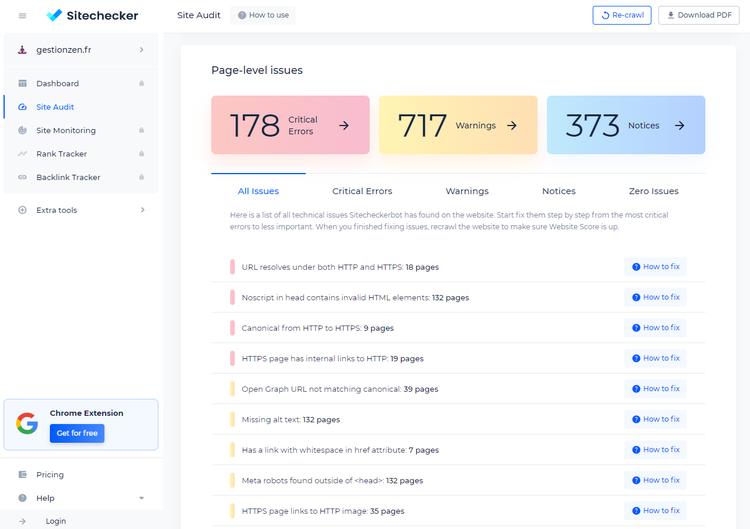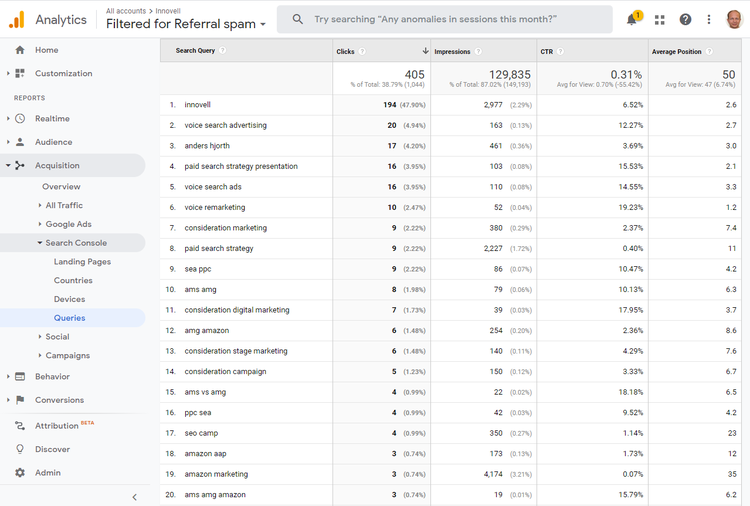
Image source: Getty Images
If you think SEO is impossible, that’s understandable: there’s so much conflicting information floating around. Let’s break it down into things you can actually tackle and improve for yourself!
I often hear “SEO is impossible to understand” or that SEO is opaque, expensive, a scam, or just for developers. I’ll grant you: SEO isn’t easy, there’s no quick fix, and there’s always more you can do. But there are many SEO tasks you can address to start improving the signals that search engines use to rank your website. So let’s go ahead with this SEO 101.
Overview: What is Search Engine Optimization (SEO)?
SEO is commonly described as all the improvements to your site and off-site signals that will help you rank better in search results.
You face two SEO challenges:
It is a game where the rules are not clearly defined, they change over time as search engines evolve
We like to separate SEO into three pillars, each of which influences the bottom line. Each requires a specific job and a specific set of skills.

There are three pillars of SEO: architecture, content, authority, and each requires a different approach and skill set. Image source: Author
How does search engine optimization (SEO) work?
Search engines collect signals on your website, off your website, and from the user behavior of your visitors. Among the hundreds of signals they use, you can affect some directly and others indirectly. Work on each of the three pillars will improve the signals that search engines consider when ranking sites.
There is a wide range of SEO tools available in the market. Some of them primarily cover one pillar, while certain suites cover the entire spectrum of tools, such as ranking tracking, site crawling, SEO keyword research, link analysis entry and competition analysis.
What are the different types of search engine optimization (SEO)?
There can be big differences between how a large company handles an SEO audit and a small business approach. But with the exception of local SEO, all SEO is based on the three types we find in the pillars illustrated above: architecture, content, and authority.
1. Architecture: Technical SEO
It would make sense to start your SEO project on the architecture pillar because this is where the technical foundation of your site lies. It’s all about setting up your hosting correctly, optimizing page speed, removing crawl obstacles, and making sure your pages have the right structural elements. However, this is the most technical approach you can take and an area where you may need outside help.
Still want a first look? Try the free Sitechecker, which crawls up to 150 pages of your website and gives you detailed information on things to improve.

Site crawlers like Sitechecker visit your site just like a search engine crawler would and alert you to obstacles and inefficiencies on every page. Image source: Author
Source: sitechecker.pro.
2. Content: Keywords and pages
You can go a long way to improve your SEO without touching the pillar of architecture. An easier starting point is the content pillar, which is where everyone can play. Here, you identify the keywords your site should rank for and optimize or create content that can rank for those keywords.
The first step is to find keywords for your site. You can brainstorm ideas, ask your customers, look at your competitors and see what keywords are already working for you.
Keywords
A good place to start is to enable Google Search Console for your site. It integrates with Google Analytics and is a gold mine of information for your SEO. It will show what keywords you are already ranking for.

When you enable Google Search Console and integrate it with your Google Analytics, you’ll be able to see all the keywords your site is appearing for. Image source: Author
Source: analytics.google.com.
Titles and descriptions
Once you have your list of prioritized keywords, you have a big job ahead of you: match each keyword with a page on your site and write keyword-rich titles and descriptions for each one. This is the first step in optimizing your site’s content, often called on-page SEO.
Content optimization
The second step in on-page optimization is to enrich the content you already have. It’s about using your keywords more prominently and more frequently. It’s also about using synonyms and variations, as well as related topics.
Content creation
It is impossible for a page to rank for keywords for which there is no content. There were probably keywords in your prioritized lists for which you had no content. This is where you start writing articles and making illustrations to respond to users searching for answers about these keywords.
3. Authority: Expert information, branding and backlinks
The final pillar of SEO is authority. Effects linked to the strength of your brand are not directly accessible, but authorized content on site, such as that created by identified experts, is.
For example, getting Tiger Woods to sign an article on a golf-related site ticks the authority box. The most useful lever for your SEO is to build backlinks that point to your site. Search engines see these as signals that show your site is a reference worth noting.
Brand recognition
Search engines aim to provide the best possible answers to a search query. They read signals to identify the popularity of a site, much like what we call brand recognition. You can compare yours to another brand by searching for them on Google Trends. Search marketing tools like Moz Pro and SEMrush also provide a brand strength assessment that is based on the SEO strength of your domain name.
Improving your brand recognition is a much broader business goal than an SEO goal, so it’s not something you’ll work on within the confines of an SEO project.
Authorized content
In certain industries, search engines are very cautious about the sites they rank. This is the case, for example, of information related to health and financial advice. In these industries, additional authority signals are believed to be very important.
These signals are called EAT factors (experience, authority and trust), but they are difficult to measure. It’s about providing deeply authoritative content, written by experts and recognized by others.
Entry links
The most tangible dimension of authority is backlinks. Both domain strength and EAT factors use them as well, so that may be where you focus your efforts. Backlinks are links from other sites that point to yours. An ideal backlink comes from a strong, reputable site, points to your landing page, and uses the keyword you want to rank for in the anchor.
The best links are, of course, the ones that are created organically when people simply link to your site for its great content and added value. But often, backlinks are not natural. So you need to submit your site to business directories, get your partners to mention it, and reach out to people who might be interested in your content and request a link.
What makes Search Engine Optimization (SEO) a unique marketing channel
Search engines are often the main drivers of traffic to sites. This traffic is free after you’ve paid for all the work you’ve done to build your site and your content. It generates recurring traffic as search engine rankings can remain static for a long time. SEO marketing can be a powerful channel, but to rank for competitive keywords, you need to optimize all three pillars.
The best places to learn about SEO and improve your skills
SEO for beginners is a popular topic on YouTube, and there are countless blogs and self-proclaimed gurus who will be happy to teach you a lesson. It is considered good advice to avoid any SEO information that is overly self-promotional or guarantees results of any kind. The following list departs from these and provides valuable resources for learning more:
1. Blackboard Friday
A series of SEO session videos originally created by the Moz team. He goes into detail about a specific SEO topic every Friday and has invented his own format. Rand Fishkin’s YouTube playlist for an hour-long SEO guide in whiteboard format is a good place to start.
look at the One Hour Guide to SEO Playlist.
2. Land of searchers
An authority site originally created by Danny Sullivan covering both SEO and PPC for search marketing and closely related areas of digital marketing such as shopping, marketplaces, social media and programmatic advertising.
Go to Land of seekers.
3. Google Search Central (formerly Webmaster Central)
Google Search Central hosts another YouTube series, but also has live “office hours” where you can ask questions in a live webinar. This is one of the only places where you can actually ask Google questions. It won’t teach you SEO, but it will teach you how to use Search Console and find answers to technical questions you’ve come across.
visit Google Search Central office hours.
4. Twitter chats
Twitter chats are a little complex to participate in, but you can always listen to them. There is a recurring #SEOchat on Thursdays and a #SEMrushchat that often addresses SEO questions. In general, Twitter is a great place to look for SEO-related information, and people are great at answering your questions or pointing you in the right direction.
Join the SEOchat on Twitter.
5. Webmaster World
An entire discussion forum dedicated to topics for webmasters with a prominent place for SEO. You can find a lot of information in the already posted questions, and if you can’t find the answer, feel free to post your own questions.
Enter the Webmaster World.
The best SEO is the CEO
Even if you are convinced that you need help to succeed with SEO, learning about it and understanding the basics will be valuable. The best SEO is always a CEO because he is the person who best understands what customers want and who is best at creating partnerships that can generate backlinks. Every company founder should do a little bit of SEO and then hand it over to the experts when it’s too technical or too time-consuming.
Business credit cards chosen by experts with rich rewards and benefits
Cash back, travel rewards, 0% APR intro finance – these can all be great credit card benefits for business owners. But how do you find the right business credit card for you? There are tons of deals on the market today, and sifting through them to find the right one can be a huge hassle. So we’ve done the hard work for you.
Get started today with one of our top picks for business credit cards in 2022.
[ad_2]
Source link




